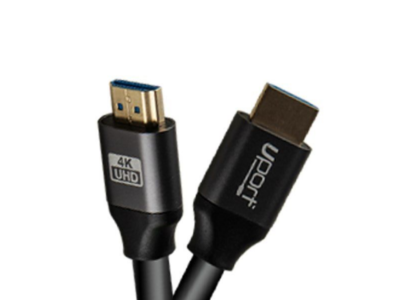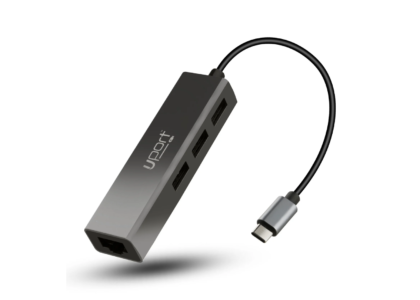In the world of home entertainment, the term “4K HDMI cables” often comes up, especially when discussing high-definition content and advanced media devices. But what sets 4K HDMI cables apart from standard HDMI cables? Do they really make a difference? This blog dives into the distinctions between HDMI and 4K HDMI cables, helping you understand their roles and importance.
Table of Contents
- Introduction to HDMI Cables
- Understanding 4K Resolution
- What are 4K HDMI Cables?
- Differences Between Standard HDMI and 4K HDMI Cables
- Key Features to Look For
- Top 5 4K HDMI Cables
- How to Maintain Your 4K HDMI Cables
- FAQs
- Conclusion
1. Introduction to HDMI Cables
What is an HDMI Cable?
HDMI (High-Definition Multimedia Interface) cables are essential components for transmitting high-definition video and audio from one device to another. Commonly used to connect TVs, monitors, gaming consoles, and Blu-ray players, HDMI cables have become a standard in the home entertainment industry.
The Evolution of HDMI
Since its introduction in 2003, HDMI technology has continuously evolved to accommodate higher resolutions, faster refresh rates, and improved audio capabilities. These advancements have culminated in the latest versions, such as HDMI 2.0 and HDMI 2.1, which support 4K and even 8K resolutions.
2. Understanding 4K Resolution
What is 4K Resolution?
4K resolution, also known as Ultra High Definition (UHD), offers a display resolution of approximately 3840 x 2160 pixels. This is four times the pixel count of 1080p Full HD, resulting in significantly sharper and more detailed images.
Benefits of 4K Resolution
- Enhanced Detail: Provides a much sharper and more detailed image, enhancing the viewing experience.
- Greater Immersion: Increased pixel density allows for larger screen sizes without losing clarity, providing a more immersive experience.
- Future-Proofing: As more content becomes available in 4K, having a compatible setup ensures you’re ready for the latest in entertainment technology.
3. What are 4K HDMI Cables?
Definition and Capabilities
4K HDMI cables are specifically designed to handle the high bandwidth required for 4K content. They support higher data transfer rates, ensuring that both video and audio signals are transmitted without degradation.
HDMI Versions and 4K Support
- HDMI 1.4: Introduced 4K support at 30Hz.
- HDMI 2.0: Increased 4K support to 60Hz with higher bandwidth.
- HDMI 2.1: Further enhancements include 8K support, dynamic HDR, and increased bandwidth up to 48Gbps.
4. Differences Between Standard HDMI and 4K HDMI Cables
Bandwidth and Speed
The primary difference between standard HDMI cables and 4K HDMI cables is bandwidth. 4K HDMI cables support higher bandwidth (18Gbps for HDMI 2.0 and up to 48Gbps for HDMI 2.1), which is necessary to handle the increased data transfer rates of 4K content.
Video Quality
4K HDMI cables are designed to support the higher resolution and faster refresh rates of 4K content. This ensures that you get the full benefit of your 4K display without any loss in clarity or color accuracy.
Audio Quality
High-quality 4K HDMI cables also support advanced audio formats, including Dolby Atmos and DTS
. These formats provide a richer and more immersive audio experience compared to standard HDMI cables.
Compatibility
While standard HDMI cables may still function with 4K devices, they may not provide the same quality and performance. 4K HDMI cables are specifically engineered to meet the demands of modern high-definition content, ensuring compatibility and optimal performance.
Future-Proofing
Investing in 4K HDMI cables ensures that your setup is future-proofed. As more content and devices support 4K and beyond, having the right cables ensures you’re ready for the latest advancements in home entertainment.
5. Key Features to Look For
Bandwidth and Speed
Ensure the HDMI cables you choose support high bandwidth (18Gbps for HDMI 2.0 and up to 48Gbps for HDMI 2.1) to handle 4K content at higher refresh rates and with advanced audio formats.
Build Quality
Look for HDMI cables with high-quality materials, such as gold-plated connectors and braided shielding. These enhance durability and reduce the risk of signal loss or interference.
Length and Flexibility
Choose a cable length that suits your setup. Longer cables should be of higher quality to maintain signal integrity over the distance.
Certification
Opt for HDMI cables that are certified by the HDMI Forum or other reputable organizations to ensure they meet the necessary standards for 4K content.
6. Top 5 4K HDMI Cables
1. AmazonBasics High-Speed 4K HDMI Cable
AmazonBasics offers a reliable and affordable 4K HDMI cable with high-speed data transfer and durable construction. It’s a great choice for everyday use.
2. Belkin Ultra HD High-Speed HDMI Cable
Belkin’s Ultra HD HDMI cable supports 4K at 60Hz with HDR, ensuring excellent video and audio quality. Its durable build makes it a solid investment.
3. BlueRigger 4K HDMI Cable
BlueRigger provides a high-quality 4K HDMI cable with gold-plated connectors and a robust build. It supports HDMI 2.0 and offers reliable performance.
4. iVanky 4K HDMI Cable
iVanky’s 4K HDMI cable features a durable braided design and supports 4K at 60Hz with HDR. It’s a great option for those seeking reliability and performance.
5. Monoprice Certified Premium HDMI Cable
Monoprice offers a certified premium HDMI cable that guarantees performance for 4K content. Its high-quality construction ensures long-lasting use.
7. How to Maintain Your 4K HDMI Cables
Proper Storage
Store your HDMI cables properly to avoid damage. Use cable organizers to prevent tangling and avoid bending the cables sharply.
Regular Cleaning
Keep your cables clean by wiping them with a soft, dry cloth. This helps maintain good connectivity and prevents dust and debris from interfering with the signal.
Avoid Overuse
While 4K HDMI cables are designed for durability, avoid excessive bending or pulling, especially when disconnecting them from devices.
Inspect for Damage
Regularly inspect your HDMI cables for signs of wear or damage, such as frayed wires or loose connectors. Replace damaged cables immediately to avoid signal issues.
8. FAQs
Do all HDMI cables support 4K?
Not all HDMI cables support 4K. Look for cables specifically labeled as “High-Speed” or “Premium High-Speed” to ensure they can handle 4K content.
What is the difference between HDMI 2.0 and HDMI 2.1?
HDMI 2.0 supports 4K at 60Hz with a bandwidth of 18Gbps, while HDMI 2.1 supports 4K at 120Hz and 8K at 60Hz with a bandwidth of up to 48Gbps, offering improved performance and future-proofing.
Can I use a 4K HDMI cable with older devices?
Yes, 4K HDMI cables are backward compatible with older devices. However, the maximum resolution and features will be limited by the older device’s capabilities.
Are expensive HDMI cables worth it?
Expensive HDMI cables often offer better build quality and durability. However, for most users, a well-made, affordable 4K HDMI cable will perform just as well as a more expensive option.
How do I choose the right HDMI cable for my setup?
Consider factors such as resolution support, build quality, length, and certification when choosing an HDMI cable. Ensure the cable meets the requirements of your devices and setup.
9. Conclusion
In conclusion, there is a significant difference between standard HDMI cables and 4K HDMI cables, particularly in terms of bandwidth, video and audio quality, and compatibility with modern devices. Investing in high-quality 4K HDMI cables ensures that you get the best possible experience from your 4K content, providing sharper images, better sound, and reliable performance. Whether you’re setting up a new home theater or upgrading your existing system, choosing the right 4K HDMI cables is crucial for enjoying the full benefits of your high-definition devices.





